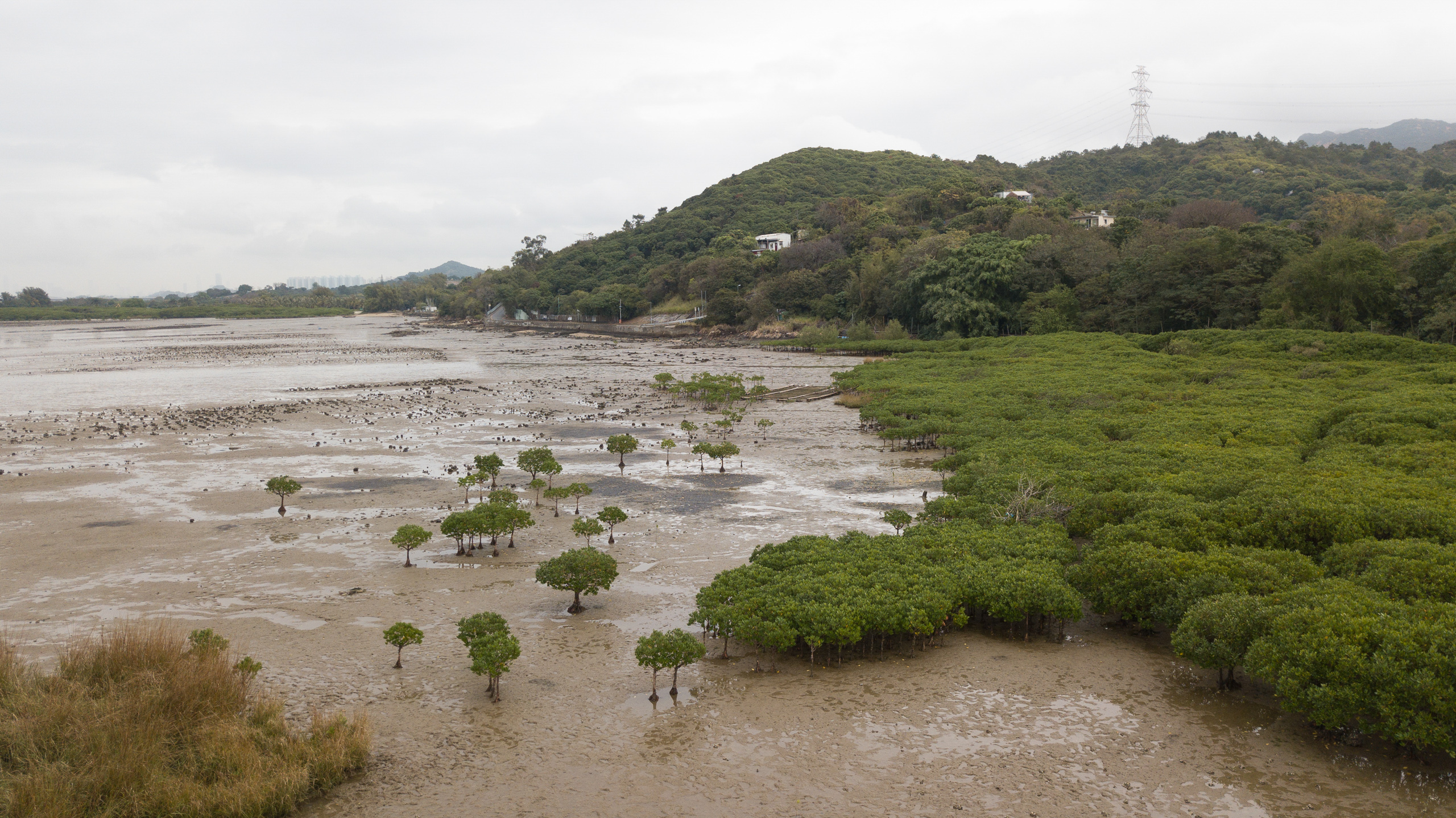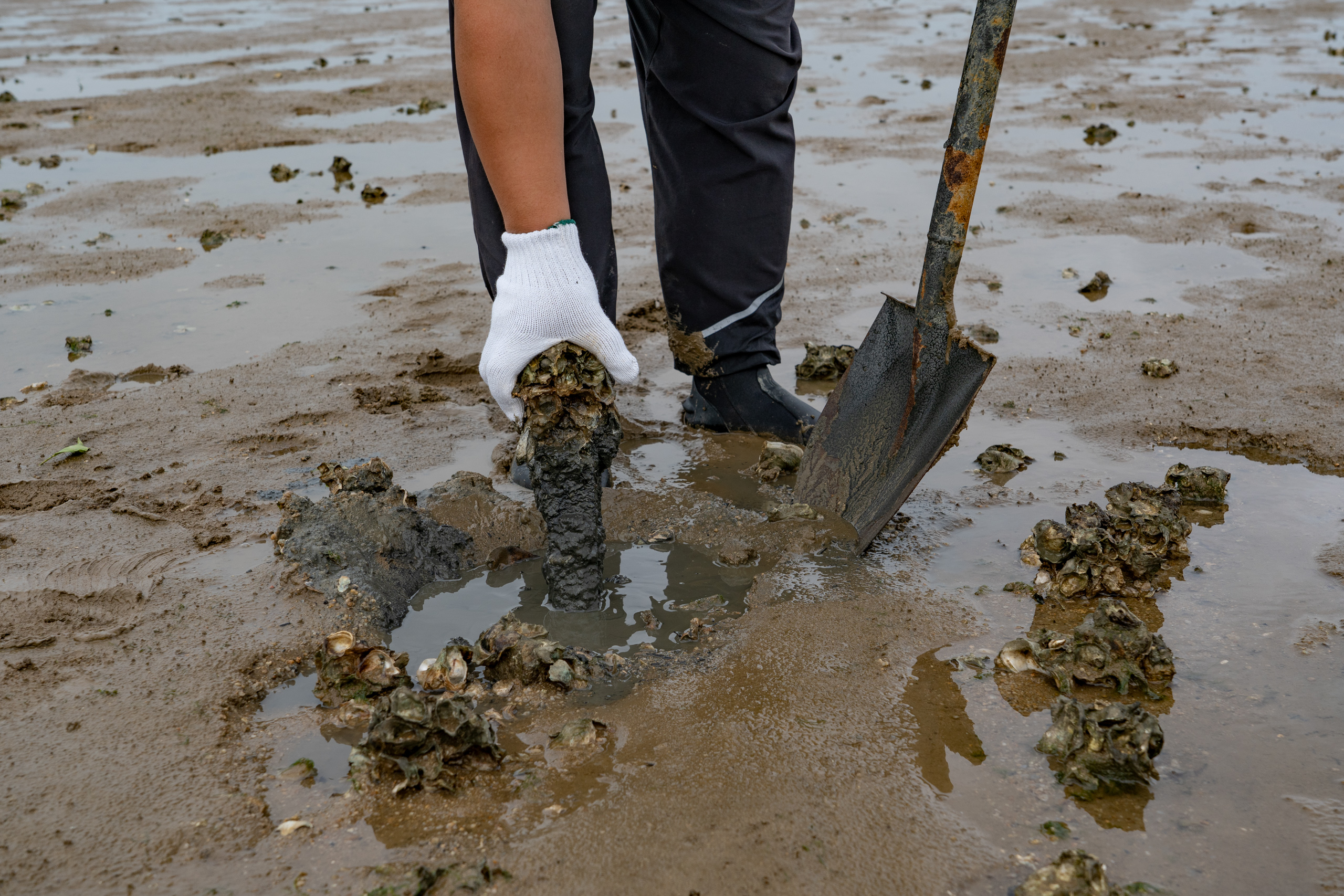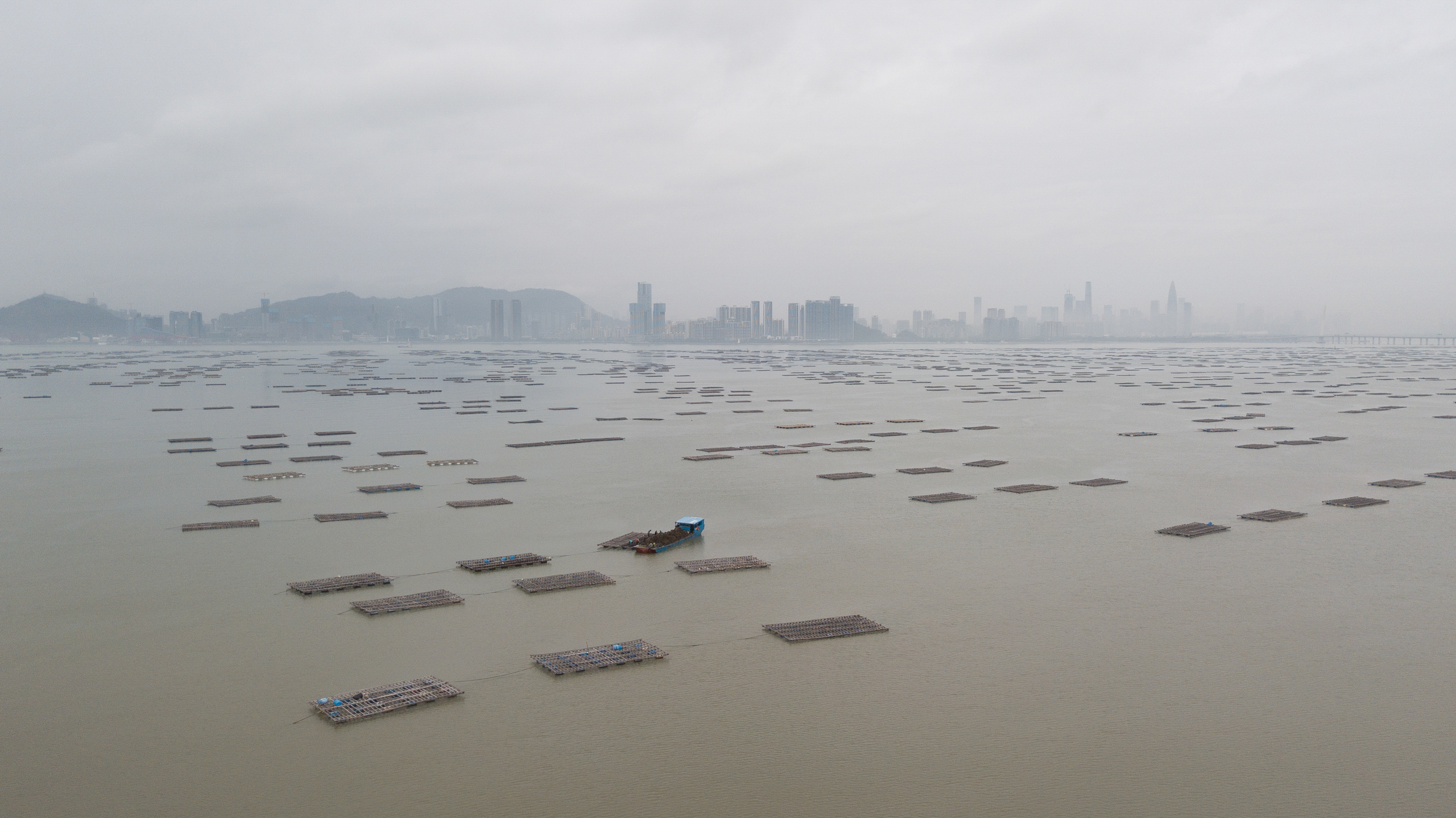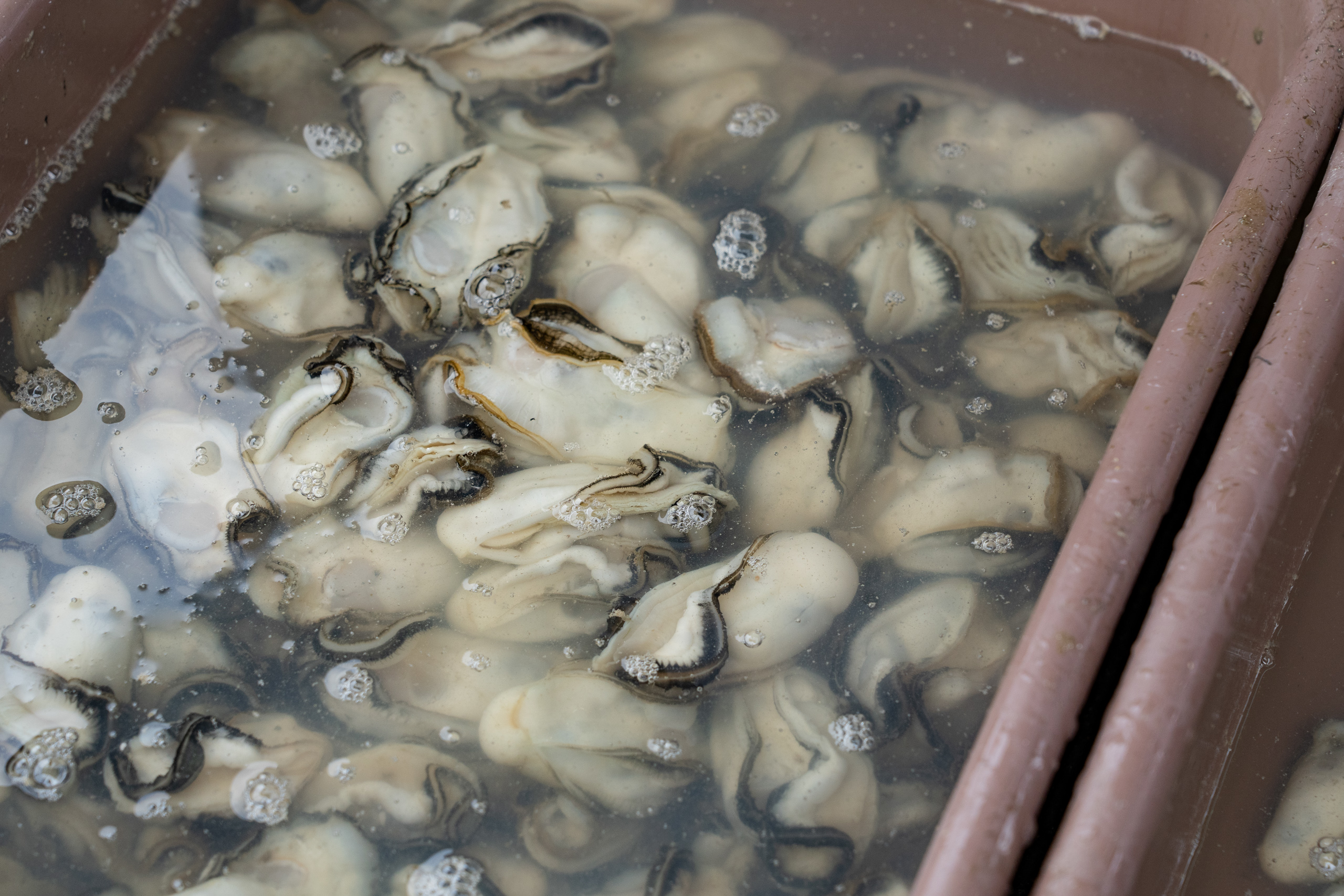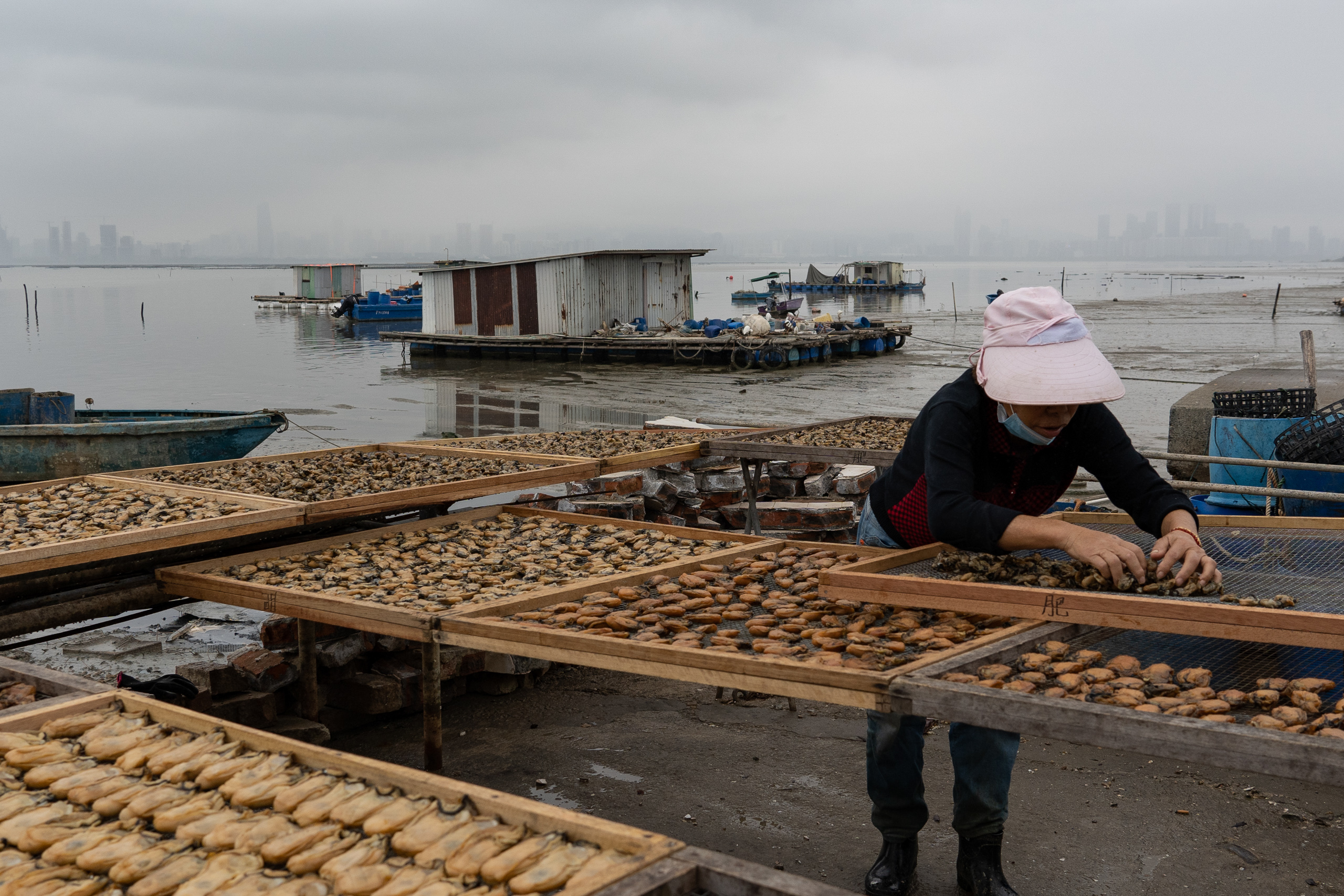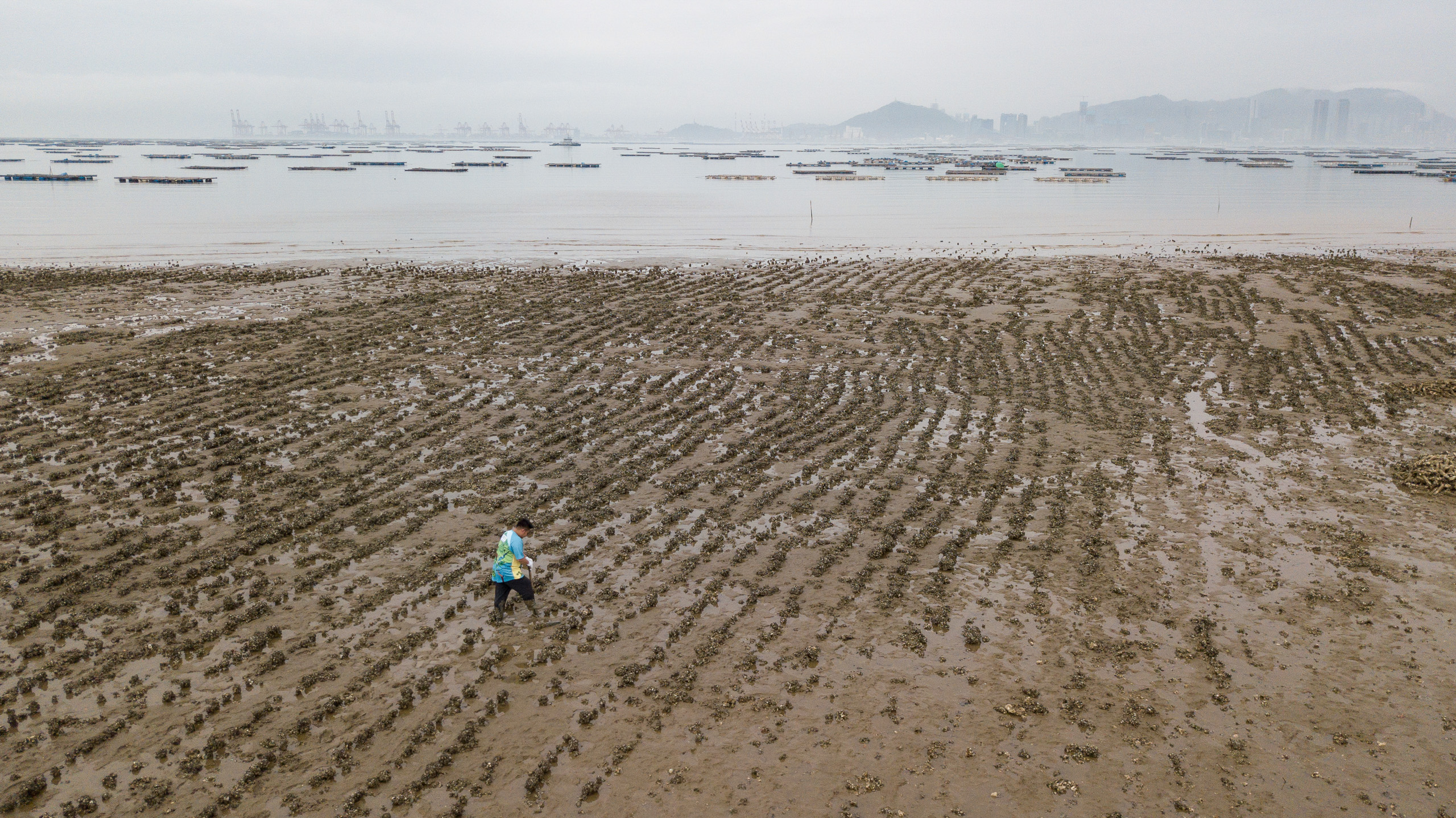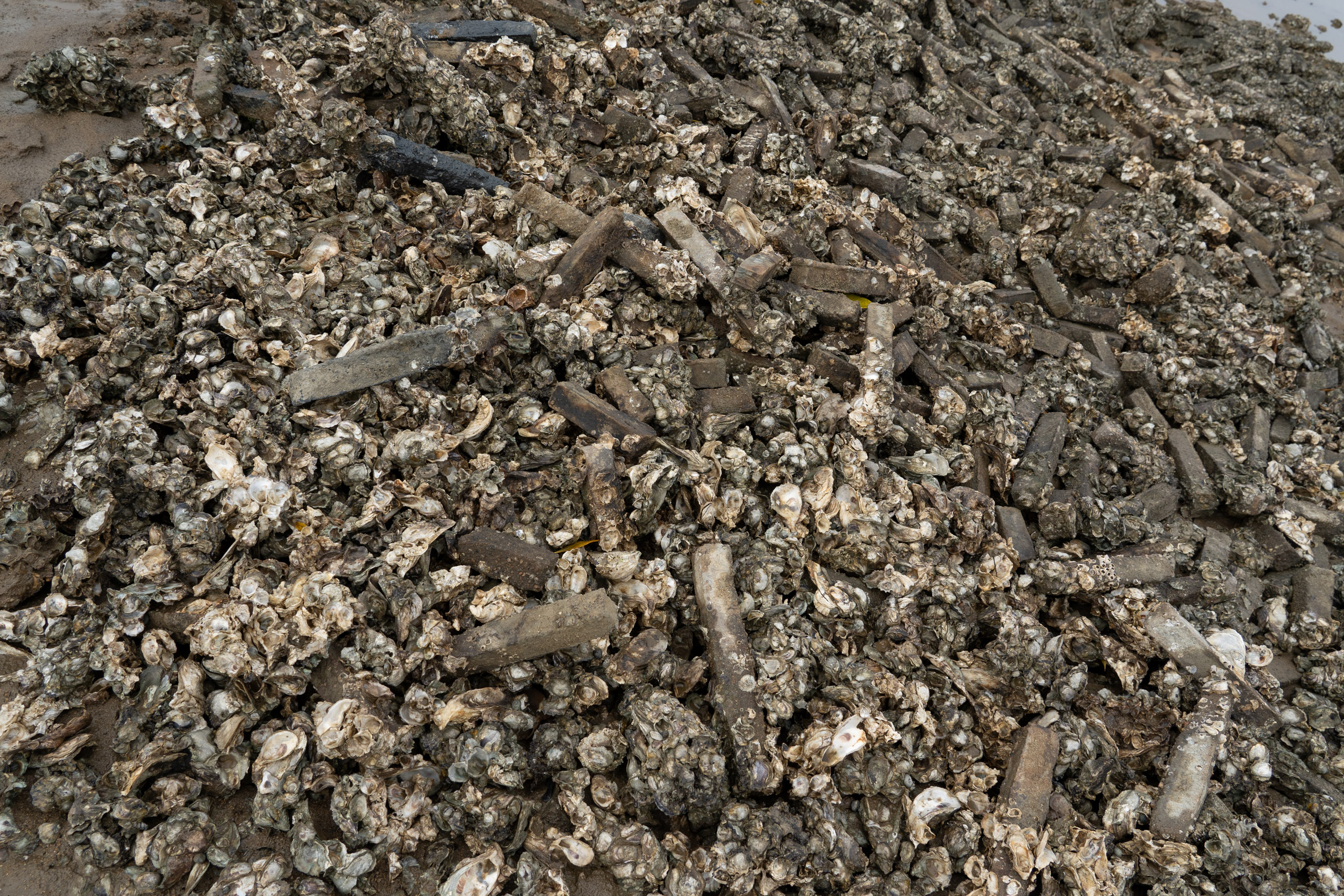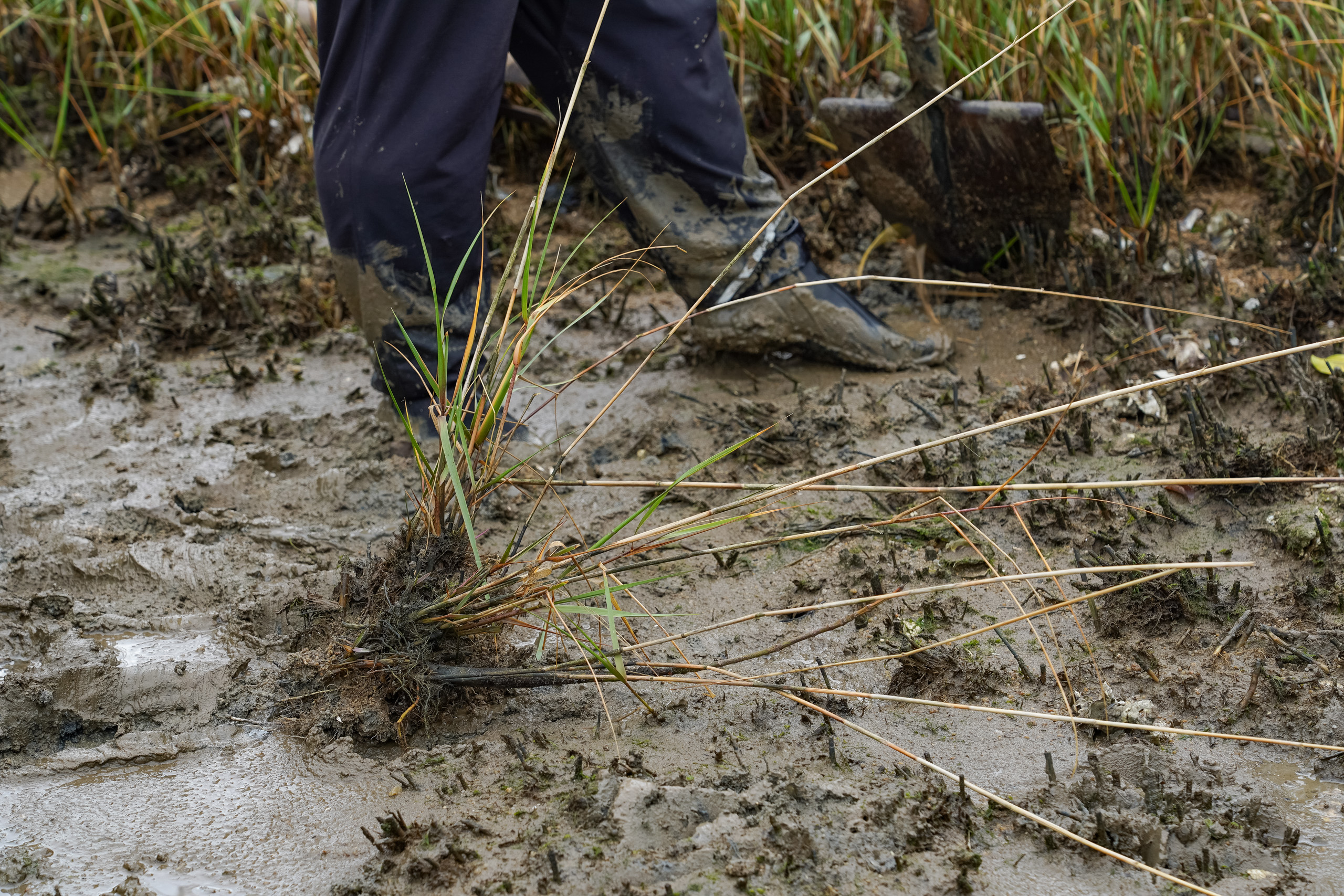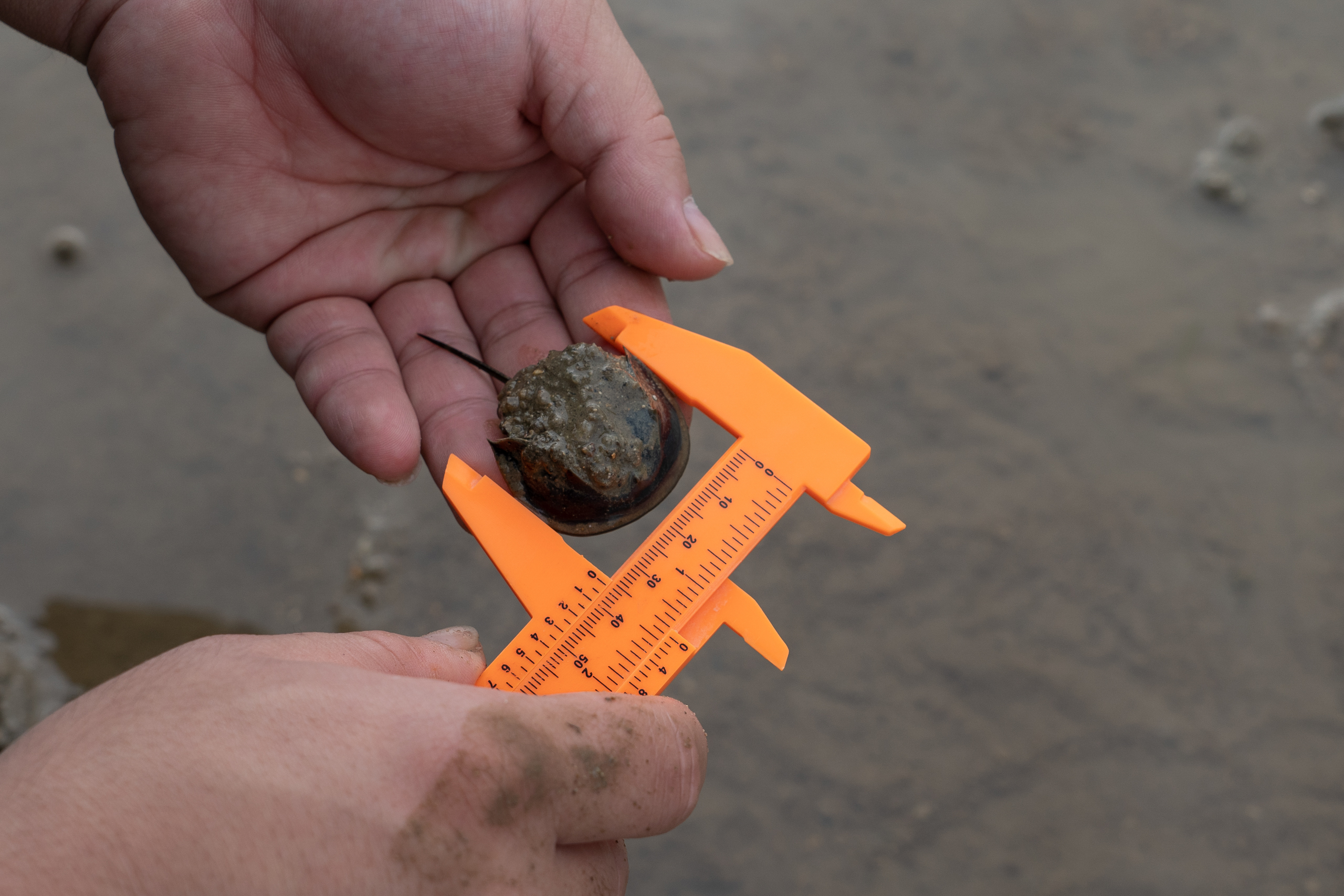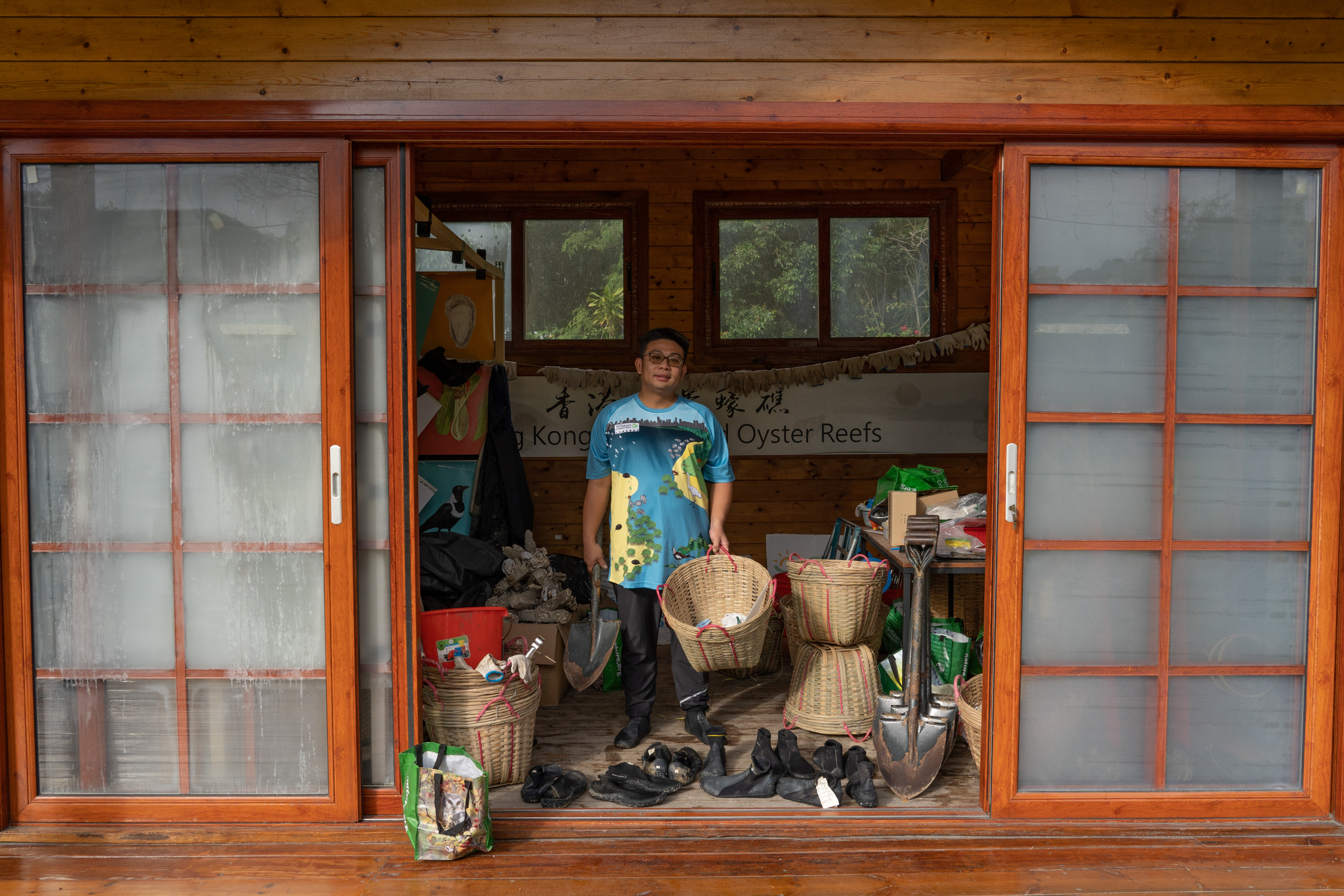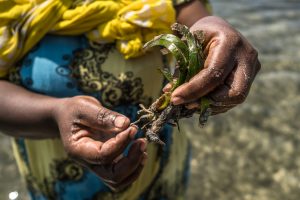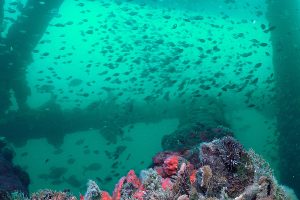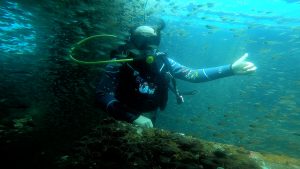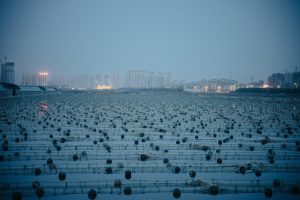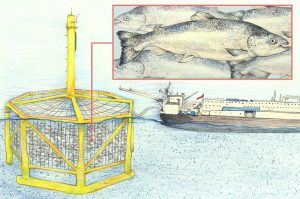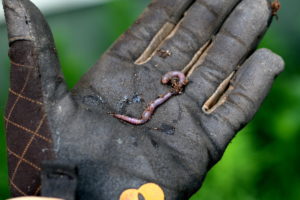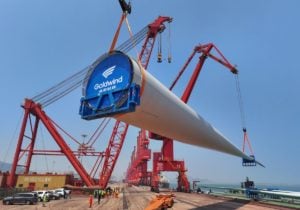Oyster reefs are important coastal habitats increasingly recognised for the ecosystem services they provide. Made of large colonies of the shellfish that attach to each other and grow in layers over time, the reefs filter and clean seawater, provide habitats for other species and act as a natural barrier against storms.
Less well known than coral reefs and mangrove forests, oyster reefs were once common in river mouths, bays and intertidal and subtidal zones across the world’s temperate and subtropical regions, and even into the tropics. But overharvesting, pollution, coastal development and climate change have caused the reefs to shrink by an estimated global average of 85% compared to historical levels. Today, they are considered one of the world’s most imperilled marine ecosystems.
This global decline is mirrored in China’s waters. Although historical data is limited, it’s thought that oyster reefs were once widespread along the country’s coasts. Evidence of ancient reefs up to 25,000 years old can be seen in the Shenhu Bay submerged forest nature reserve in Jinjiang, Fujian province. The extent of natural reefs that survive today is also not known. Where sites have been identified, surveys paint a gloomy picture. A 2013–2014 study of one of the country’s largest living oyster reefs in Liyashan, Jiangsu province found that its area had declined by nearly 40% over the previous decade, in large part due to excessive sedimentation caused by coastal engineering projects.
There are signs of hope though. A greater awareness of the importance of oyster reefs has led to a growing movement across the world to restore what has been lost. In China too, there are an increasing number of restoration projects, although efforts have been slower to gather momentum. Many of the projects are still in the pilot phase, conducted on a small scale to experiment with different methods.
One such project is in Hong Kong’s Pak Nai, where The Nature Conservancy (TNC) and the University of Hong Kong have been working since 2020 to rewild an abandoned oyster farm and study the area’s biodiversity. When photographer Shanshan Kao visited, she found a muddy expanse dotted with old posts and piles of aquaculture debris. Up close though, they were covered in oysters and crawling with tiny crabs, snails and other marine species.
Pak Nai is an area of wetland in north-west Hong Kong. It sits facing the city of Shenzhen on the southern shore of Deep Bay (also known as Shenzhen Bay). Its muddy tidal flats still support patches of
mangrove and seagrass, and are rich in biodiversity. Natural oyster reefs are often found seaward of coastal ecosystems like this, protecting them against erosion and promoting sedimentation by calming waters. (Image: Shanshan Kao / China Dialogue Ocean)
There are very few
natural oyster reefs left around Hong Kong. But the bivalves have been farmed on the tidal flats of Deep Bay for
hundreds of years, not just for food but also for their shells, historically used to produce lime for construction and agriculture. The traditional “bottom cultivation” technique involves providing a hard substrate, such as concrete posts driven deep into the mud, for oyster larvae to naturally settle on. Covered with water at high tide, these artificial rocks soon become colonised by oysters that are left to grow for
five years before being harvested. (Image: Shanshan Kao / China Dialogue Ocean)
Since the
1970s, Deep Bay’s oyster farmers have used a new “off-bottom” method introduced from
Japan whereby the oysters are grown on ropes hung into the water from bamboo rafts. The Hong Kong side of the bay is chock full of these rafts. It’s not the same on the Shenzhen side, where oyster farming has been banned since the
early 2000s. (Image: Shanshan Kao / China Dialogue Ocean)
Oysters are still at the centre of life in the village of Lau Fau Shan, a few kilometres up the coast of Deep Bay from Pak Nai. But the area’s traditional oyster farming industry has declined over the past few decades as many of the older generation retire, and the young seek opportunities elsewhere. The oysters are also suffering from the impacts of climate change and toxic algal blooms. In an effort to
revive the industry, scientists from the University of Hong Kong are monitoring how Lau Fau Shan’s farmed oysters are responding to rising water temperatures and acidification, and experimenting with ways to remove contaminants so their meat is safe to eat. (Image: Shanshan Kao / China Dialogue Ocean)
Some of Lau Fau Shan’s oysters are sold fresh in Hong Kong’s markets or made into oyster sauce. But the village is most famous for its “golden” oysters, which are laid out on racks to dry in the sun, especially during the warm, clear winter months. (Image: Shanshan Kao / China Dialogue Ocean)
Today,
98% of global oyster production comes from aquaculture, with China contributing 85%. Historically though, oysters were harvested from natural reefs. In places like the
United States and Australia, this often involved the use of damaging and unsustainable techniques such as bottom dredging. (Image: Shanshan Kao / China Dialogue Ocean)
The general decline of oyster aquaculture in Deep Bay and the current predominance of the raft system has meant traditional intertidal oyster farms have been abandoned. At one of these farms in Pak Nai, left fallow for several years, scientists from the University of Hong Kong have discovered an
increase of biodiversity. This natural recovery is thanks to the lack of disturbance. Not only does harvesting no longer take place, the site also continues to enjoy legal protection as an aquaculture lease. On the back of this, the researchers are now working with TNC to encourage the growth of oysters in more naturally structured reefs, in the hope that this will further promote biodiversity. (Image: Shanshan Kao / China Dialogue Ocean)
The restoration of Pak Nai’s abandoned oyster farm involves digging up its concrete posts. These were originally placed in neat lines to prevent the oysters from forming overly large or complex reef structures and allow for easy harvesting. The posts, which already have oysters and other species attached to them, are being moved closer to the low tide line where the bivalves are more likely to thrive, and piled up to create artificial “starter” reefs. (Image: Shanshan Kao / China Dialogue Ocean)
The starter reefs provide more natural, three-dimensional structures with plenty of hard surfaces for oyster larvae to attach to, as well as numerous nooks and crannies for other species. Elsewhere in Hong Kong, The Nature Conservancy is creating artificial reefs using
recycled oyster shells from the city’s catering and aquaculture industries. These shells are first sent to be naturally weathered at the organisation’s recycling point in Pak Nai, to make sure they are clean and free from disease. (Image: Shanshan Kao / China Dialogue Ocean)
Oysters are just part of the picture at Pak Nai. To protect the area’s biodiversity, TNC and other groups are attempting to remove
invasive salt-water cordgrass, which can grow rapidly and overrun native habitats such as seagrass meadows and exposed mudflats. According to Zhang Zhaohui of China’s Ministry of Natural Resources, salt-water cordgrass has become “
one of the biggest threats” to the country’s coast since being introduced in the 1970s. (Image: Shanshan Kao / China Dialogue Ocean)
Pak Nai’s wetlands are an important habitat for Hong Kong’s two species of horseshoe crab, one of which (
Tachypleus tridentatus) is listed as
endangered on the International Union for Conservation of Nature’s Red List. This is one reason the Hong Kong Marine Protection Alliance is calling for Pak Nai – already a site of special scientific interest – to be designated a
marine protected area. (Image: Shanshan Kao / China Dialogue Ocean)
As part of their project to encourage the growth of oyster reefs in the area, TNC is monitoring the horseshoe crab population, and has already noted a slow
increase in numbers over the past three years. (Image: Shanshan Kao / China Dialogue Ocean)
Tom Chan Tsz-kin is TNC’s community conservation manager in Hong Kong. As well as its habitat management work at Pak Nai, the organisation also offers educational tours to raise awareness of the importance of oyster reefs and the protection of wetland ecosystems. Public and community engagement are key to the success of projects like this. But Hong Kong’s coastline continues to face pressure from development. And with the
Northern Metropolis megaproject threatening to transform the relatively rural landscape of the New Territories,
conservationists fear the pressure on Deep Bay’s important wetlands will grow. (Image: Shanshan Kao / China Dialogue Ocean)
